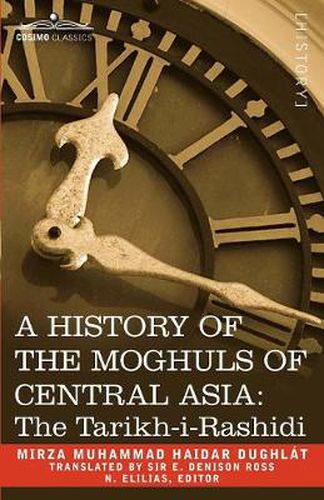Readings Newsletter
Become a Readings Member to make your shopping experience even easier.
Sign in or sign up for free!
You’re not far away from qualifying for FREE standard shipping within Australia
You’ve qualified for FREE standard shipping within Australia
The cart is loading…






This title is printed to order. This book may have been self-published. If so, we cannot guarantee the quality of the content. In the main most books will have gone through the editing process however some may not. We therefore suggest that you be aware of this before ordering this book. If in doubt check either the author or publisher’s details as we are unable to accept any returns unless they are faulty. Please contact us if you have any questions.
One day when Tughluk Timur Khan was feeding his dogs with swine’s flesh, Shaikh Jamal-ud-Din was brought into his presence. The Khan said to the Shaikh: Are you better than this dog or is the dog better than you? The Shaikh replied: If I have faith I am the better of the two, but if I have no faith this dog is better than I am. The Khan was much impressed by these words, and a great love for Islam took possession of his heart. -from Part I: Chapter 1: Beginning of the Tarikh-I-Rashidi When the history of the Moghuls of Central Asia, which covered several tumultuous centuries, was in danger of being lost entirely, one of its players, the military general and ruler of Kashmir MIRZA MUHAMMAD HAIDAR DUGHLAT (1499-1551), took it upon himself to write it down. The result was the legendary Tarikh-i-Rashidi, and this 1893 work-from the all-but anonymous N. Elias and E. D. Ross -represents the first full translation into English of one of the great firsthand documents of global history. Elias and Ross’s extensive introduction puts the work itself in its historical context and begins to present us with the world it depicts, one of strife and adventure. The grand story that follows is one of kings and invasions told with enormous pride by a participant in the very history we are witnessing. Little known outside academic circles but vital for understanding how Central Asia was shaped, this is an extraordinary work of history.
$9.00 standard shipping within Australia
FREE standard shipping within Australia for orders over $100.00
Express & International shipping calculated at checkout
This title is printed to order. This book may have been self-published. If so, we cannot guarantee the quality of the content. In the main most books will have gone through the editing process however some may not. We therefore suggest that you be aware of this before ordering this book. If in doubt check either the author or publisher’s details as we are unable to accept any returns unless they are faulty. Please contact us if you have any questions.
One day when Tughluk Timur Khan was feeding his dogs with swine’s flesh, Shaikh Jamal-ud-Din was brought into his presence. The Khan said to the Shaikh: Are you better than this dog or is the dog better than you? The Shaikh replied: If I have faith I am the better of the two, but if I have no faith this dog is better than I am. The Khan was much impressed by these words, and a great love for Islam took possession of his heart. -from Part I: Chapter 1: Beginning of the Tarikh-I-Rashidi When the history of the Moghuls of Central Asia, which covered several tumultuous centuries, was in danger of being lost entirely, one of its players, the military general and ruler of Kashmir MIRZA MUHAMMAD HAIDAR DUGHLAT (1499-1551), took it upon himself to write it down. The result was the legendary Tarikh-i-Rashidi, and this 1893 work-from the all-but anonymous N. Elias and E. D. Ross -represents the first full translation into English of one of the great firsthand documents of global history. Elias and Ross’s extensive introduction puts the work itself in its historical context and begins to present us with the world it depicts, one of strife and adventure. The grand story that follows is one of kings and invasions told with enormous pride by a participant in the very history we are witnessing. Little known outside academic circles but vital for understanding how Central Asia was shaped, this is an extraordinary work of history.